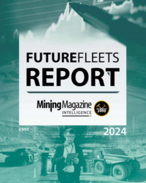Western Australia is now the only state Down Under to be ranked in the top 10 mining jurisdictions, with the ranking of all Australian states except South Australia falling over the last year.
South Australia has been a regular top performer in the World Risk Survey of affiliated publication RESOURCESTOCKS, but last year’s RS survey, which had a record participation from industry including executives, brokers and investors, also revealed Australia was kicked out of the top 10 for the first time since 2010.
The MCA said global executives have expressed concern at duplicative and costly approvals procedures, higher royalty charges over recent years and development delays caused by anti-coal activism.
“If Australia’s attractiveness continues to decline, the cost will be borne across the Australian community in slower growth in household incomes, real wages and higher unemployment,” MCA CEO Brendan Pearson said.
“On the other hand, the gains on offer from lifting Australia’s ranking are considerable.”
He said that while the abolition of the carbon and mining taxes were important steps forward, as was the conclusion of free trade agreements with nations that import more than $125 billion in minerals exports annually, it was critical that the Senate builds these reforms by allowing through legislation to pass the one-stop shop approach to streamlining federal and state environmental approvals.
He cited research by BAEconomics which has shown that reducing project delays by one full year would add $160 billion to Australia’s national income over the period to 2025.
“That dividend will happen because by reducing costly delays Australia can start to regain market share in major global markets, with subsequent flow on effects on additional investment in the sector,” Pearson said.
“The continued success of Australia’s mining industry must not be taken for granted.”
Australia’s minerals exports reached $164 billion in 2013-14, with the sector producing more gross value added per unit of labour than any other industry in Australia. According to official data, each worker employed in the mining sector generates around $515,000 for the economy.
Research by the Reserve Bank has shown that the mining expansion over the decade from 2005 lifted household incomes by 13%, real wages by 6%, while unemployment was 1.25% lower than it would have been without the boom.























